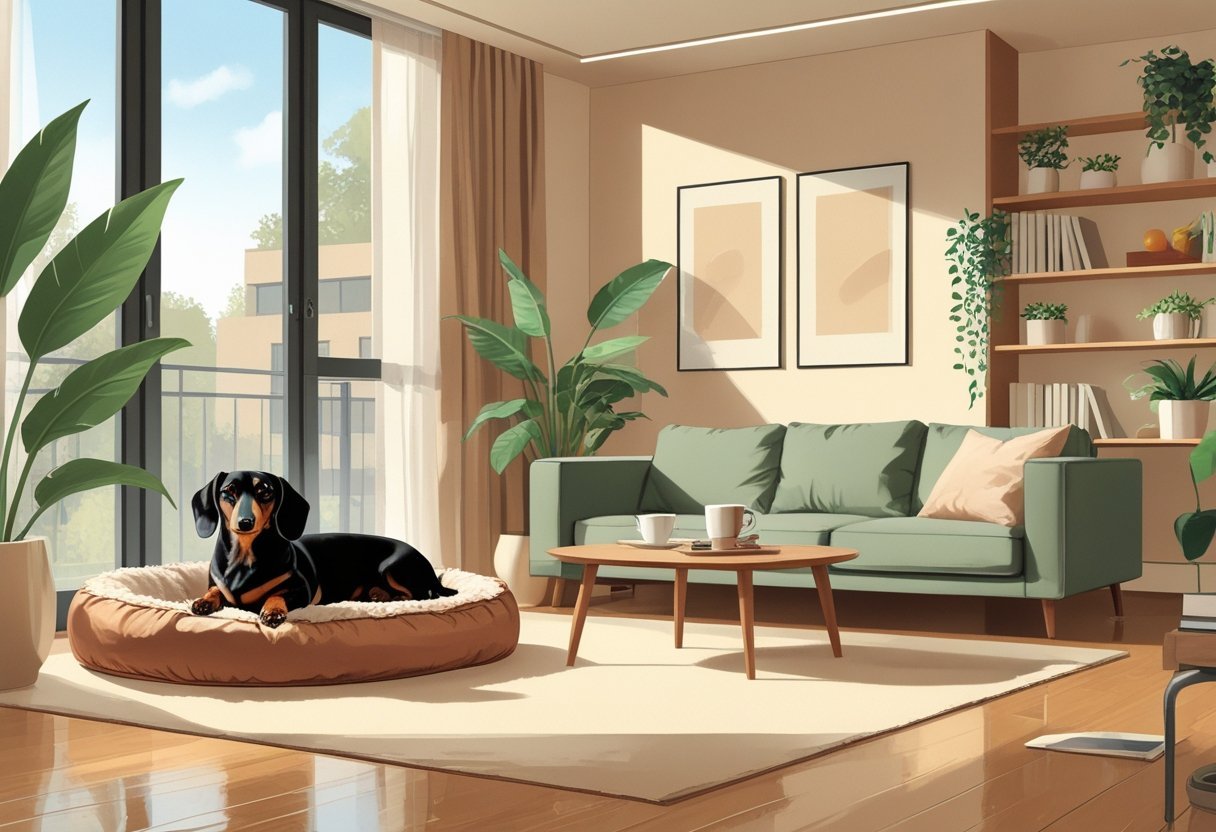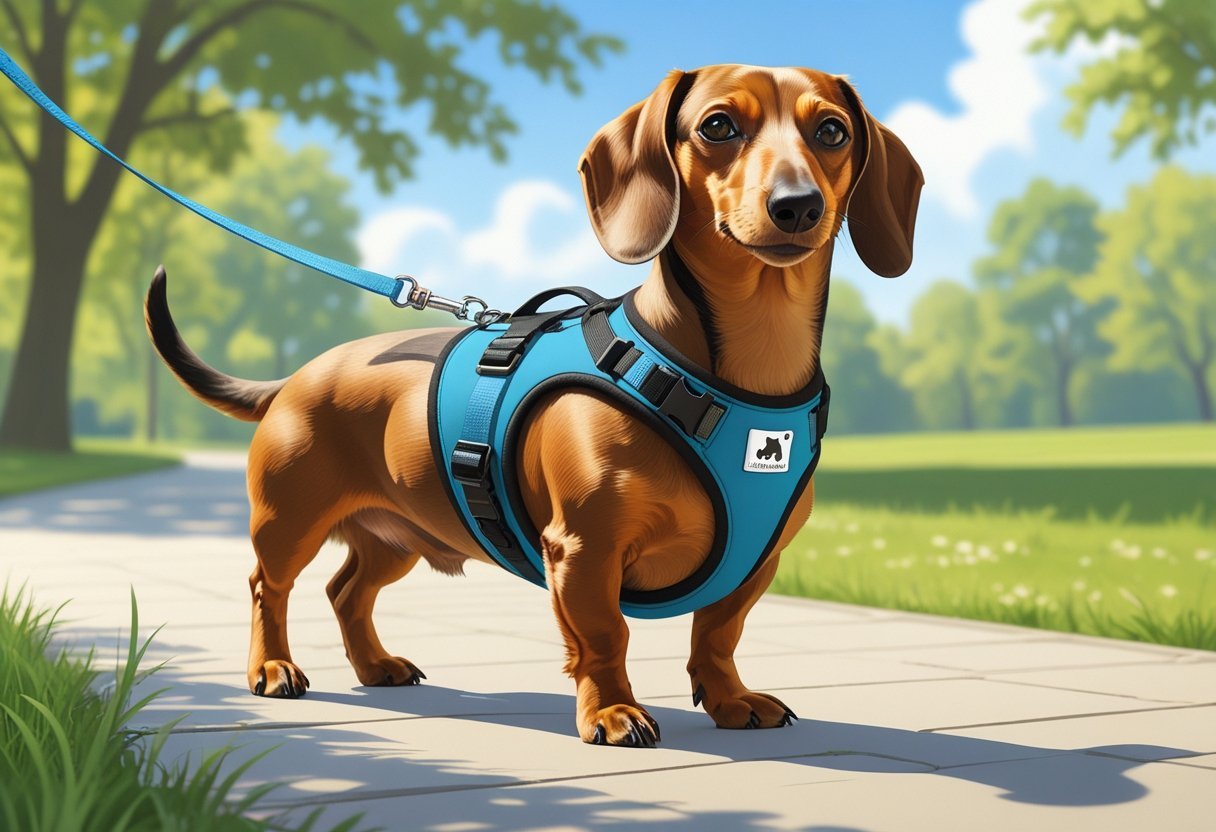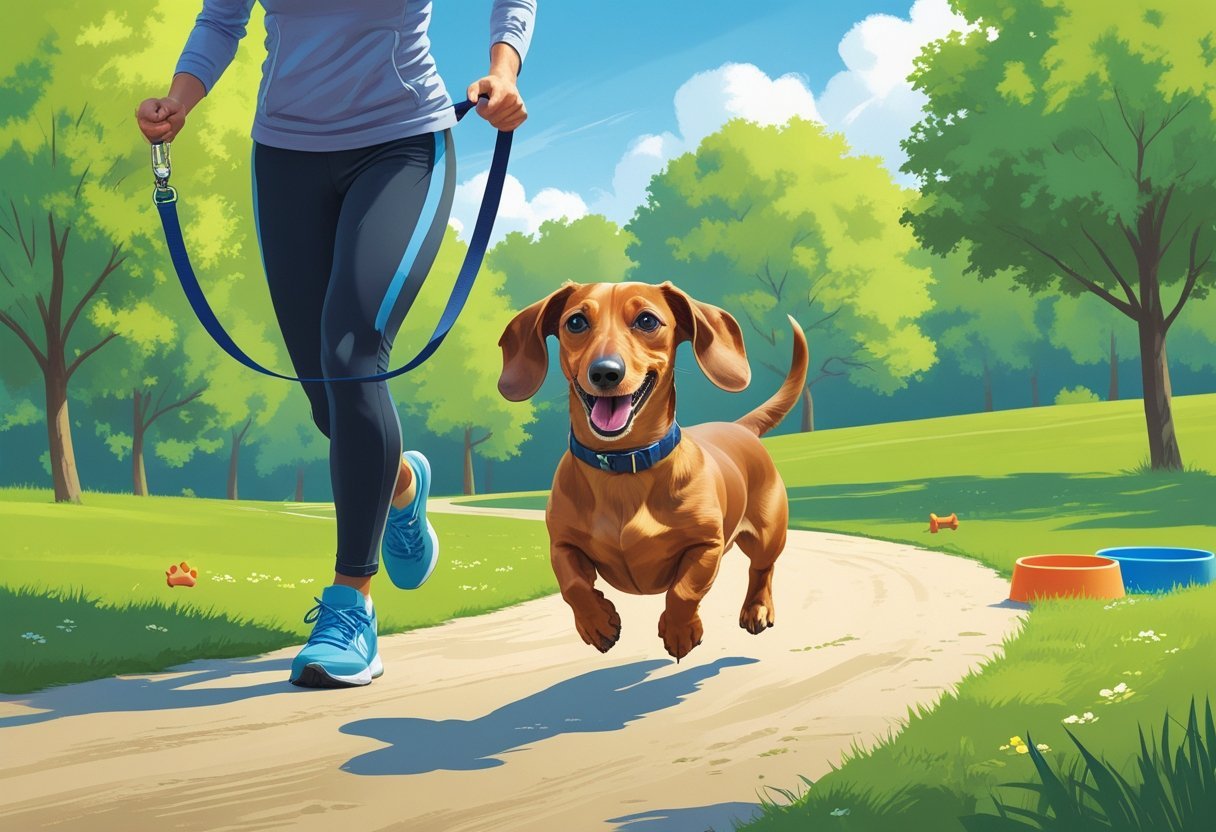Dachshund apartment living can actually work out pretty well—if you’re prepared 🐾. These little dogs fit better in apartments than many larger breeds, but they do have quirks you’ll need to handle 😊.
Dachshunds make good apartment dogs when you provide proper exercise, training, and mental stimulation 🐕. Their small size helps, but they’re energetic and love to bark, so you’ll want to set up routines that keep them happy—and your neighbors sane 🏡.
Understanding your dachshund’s personality and needs goes a long way 💡. From potty training headaches to their protective streak, you can get through the tough stuff with a few solid strategies 💪.
Key Takeaways ✨
- Dachshunds adapt well to apartments when given proper exercise and mental stimulation daily 🐾
- Consistent potty training and barking management are essential for apartment harmony 🐶
- Setting up your space correctly and maintaining good neighbor relationships ensures long-term success 🏠
🐾 Free Dachshund Care Guide
Download our free checklist to ensure your Dachshund stays happy, healthy, and well-loved!
Get Your Free Guide 🐶Understanding Dachshund Apartment Living
Dachshunds can do great in apartments if you meet their exercise needs and keep their barking in check 🐾. Their small bodies fit right in, but those hunting instincts and noisy habits won’t just disappear 🌱.
Dachshund Personality Traits 💛
Dachshunds are loyal, affectionate, and stick close to their people 🐶. Most of them would rather snuggle on the couch than venture outside for hours 🛋️.
That said, their badger-hunting roots still show 🐾. They love to dig, chase, and sniff out anything interesting, which sometimes means scratched doors or carpets 🪵.
Barking is definitely part of the dachshund package 🔊. Some bark at every little thing—visitors, hallway noises, even leaves blowing by the window 🍃. Others are a bit more reserved, but there’s always a risk of noise complaints 📢.
Training these dogs isn’t always easy 🐾. They’re smart, but they like to do things their way, so patience is key when teaching apartment rules ⏳.
Dachshunds tend to be protective, too 🐕. Even though they’re small, they’ll let you know if someone’s at the door 🚪. Most aren’t aggressive—they just want you to be aware 👀.

🏥 The Swiftest – Quick, Reliable Pet Insurance for Your Doxie
Apartment living comes with surprises—be ready for sudden vet visits and emergencies with the right coverage for your Dachshund.
- Instantly compare top pet insurance plans in one spot 🐾
- Find affordable coverage tailored to your Dachshund’s needs 💰
- Peace of mind for vet visits, accidents, and unexpected care 🩺
Adaptability to Smaller Spaces 🏢
Dachshunds’ compact size makes them a solid choice for apartment life 🐾. Standards usually weigh 16-32 pounds, and minis are under 11 pounds ⚖️.
About 30 minutes of exercise a day does the trick 💪. This could be a couple of short walks, some playtime inside, or a quick romp in a small yard 🌳.
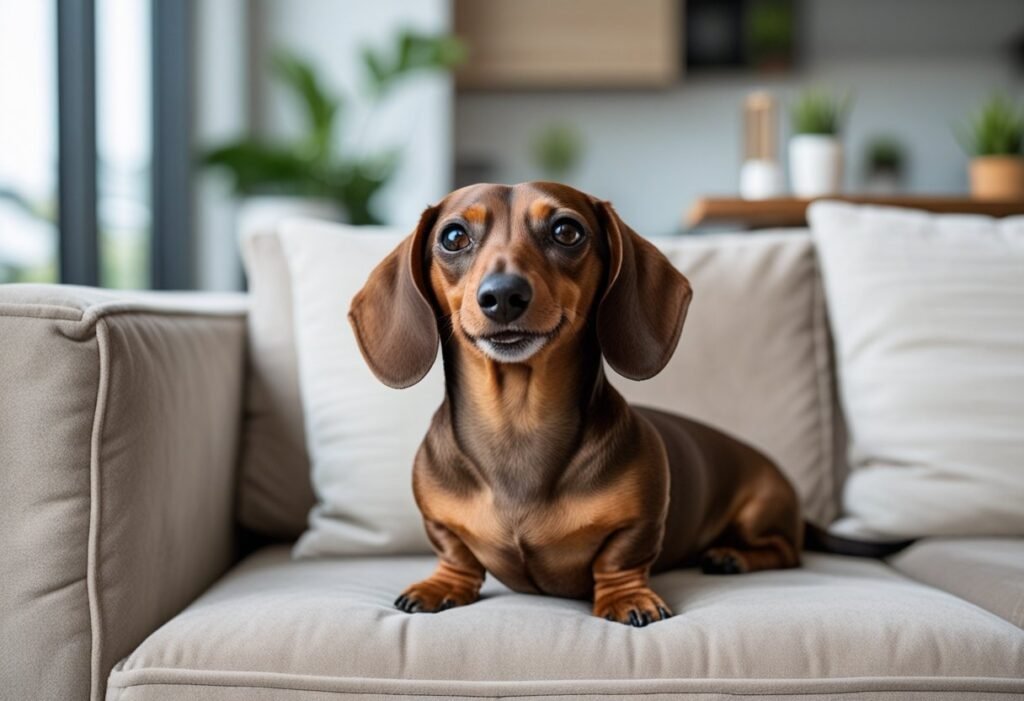
They don’t need marathon runs or intense workouts 🏃. Indoor activities work just fine—think toys, following you around, or napping in a sunny spot ☀️.
Temperature matters since these dogs get cold easily ❄️. Apartments usually have steady heating, which dachshunds love ❤️. For those chilly winter walks, a sweater isn’t a bad idea 🧥.
With their moderate energy and love of naps, they’re honestly a pretty good fit for apartment routines 🐾.
Common Challenges in Apartments ⚠️
Barking is probably the toughest issue 🔊. They’ll bark at footsteps in the hallway, neighbors talking, or the sound of a delivery truck 🚚.
Back problems are another biggie 🦴. Their long spines don’t handle stairs well, so you might need to carry them up and down or block off staircases 🚫.
Potty training can be a pain without a yard 🏡. Dachshunds are notorious for being slow to housetrain, so you’ll need to keep a schedule and get outside (or to pads) often ⏰.
Separation anxiety shows up if your dachshund gets too attached 😢. You might come home to chewed furniture, barking, or little accidents if you’re gone too long 🪑.
Some apartments have noise rules or breed restrictions, so check your lease 📜. Neighbor complaints about barking are always a possibility 🚪.
Exercise and Activity Requirements for Dachshunds
Dachshunds need 30-60 minutes of exercise a day, but it’s best to split that up into shorter sessions 🐾. When outdoor time is limited, indoor play and mental games help burn off their energy 🧩.
Daily Physical Activity Needs 🚶♂️
For adults, aim for 30-60 minutes of exercise each day ⏱️. Break this into two or three walks, each lasting 10-20 minutes 🌳.
Short walks are safer for their backs 🦴. Skip the long hikes and intense running—those just aren’t worth the risk ❌.
Try this daily routine:
- Morning walk (15-20 minutes) 🌅
- Evening walk (15-20 minutes) 🌆
- Quick potty breaks throughout the day 🚪
Puppies under 18 months need less activity—about five minutes per month of age, twice a day 🐶. Seniors might prefer shorter, more frequent strolls 🚶♀️. If your dog starts panting heavily or lagging behind, it’s probably time to head home 🏡.
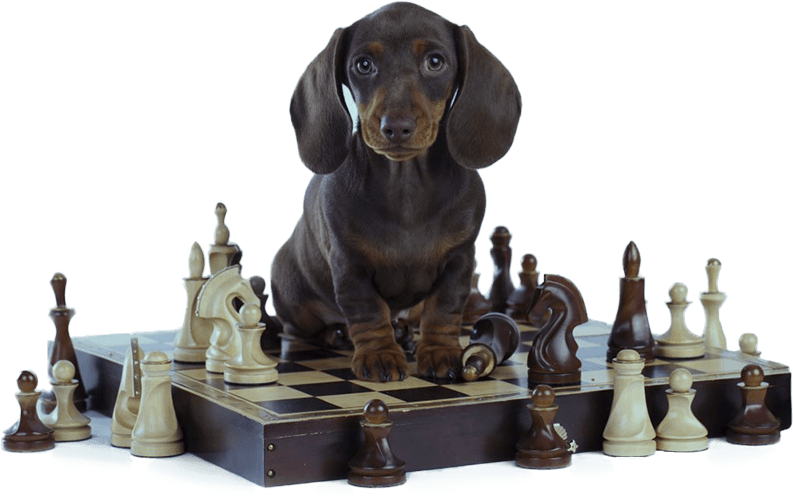
🧠 Brain Training for Dogs – Smart Solutions for Apartment Life
Curb barking, destructive chewing, and potty problems with fun, positive training tailored for your Dachshund’s clever mind.
- Interactive lessons to keep stubborn Dachshunds engaged 🐶
- Helps reduce boredom and anxiety in small spaces 🏡
- Easy step-by-step video guides for busy dog parents 🎥
Mental Stimulation Indoors 🧠
Keeping their mind busy is just as important as physical exercise 💡. Bored dachshunds tend to bark, dig, or chew on things they shouldn’t 🐾.
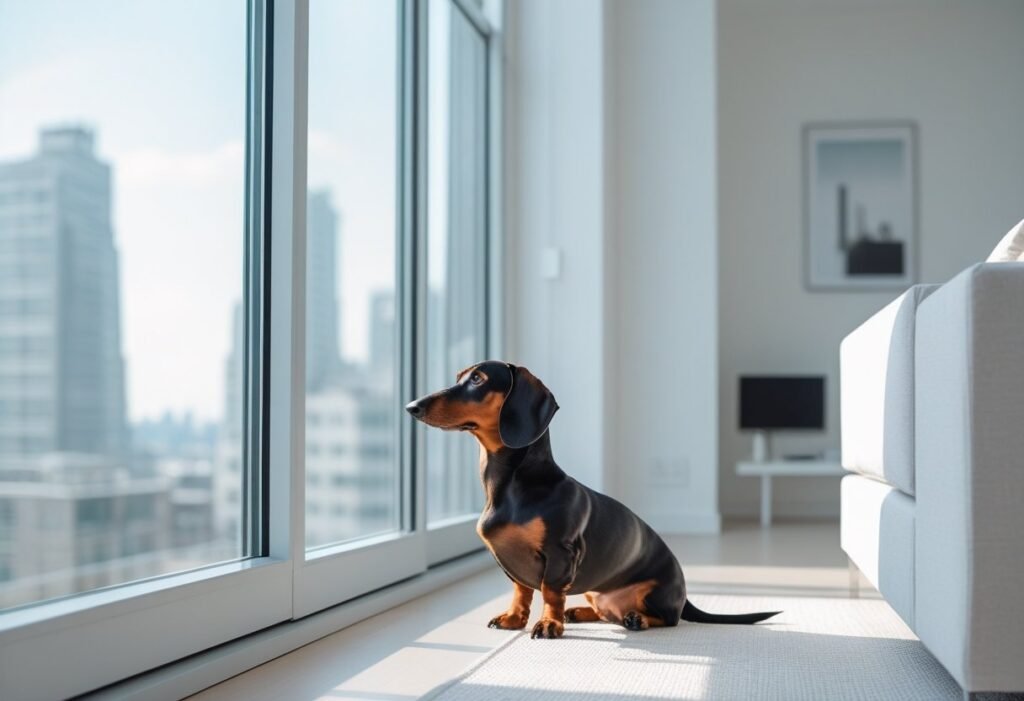
Good mental activities:
- Puzzle feeders at mealtime 🥏
- Hide treats around the apartment 🍪
- Short trick-training sessions (10-15 minutes) 🎓
- Sniff games with hidden toys 🧸
Switch up their toys every week or so 🔄. Food-dispensing toys slow down those speed-eaters, too 🍽️.
Practice basic commands like sit, stay, and come for five to ten minutes, twice a day 🐕. It’s amazing how much that helps ✨.
Safe Indoor Play Ideas 🏠
Apartment play should protect your dachshund’s back 🐾. Avoid games where they leap off furniture or twist suddenly ⚠️.
Try these safe games:
- Tug-of-war with a rope toy 🪢
- Gentle fetch with a soft ball 🎾
- Hide-and-seek around the apartment 👀
- Nose work using treat puzzles 🍬
Block stair access with baby gates if you can 🚫. Set up a digging box with blankets or towels to give them a safe way to dig 🪣.
Keep play sessions short ⏳. If your dachshund starts hunching or seems uncomfortable, stop right away 🛑.
Potty Training a Dachshund in an Apartment
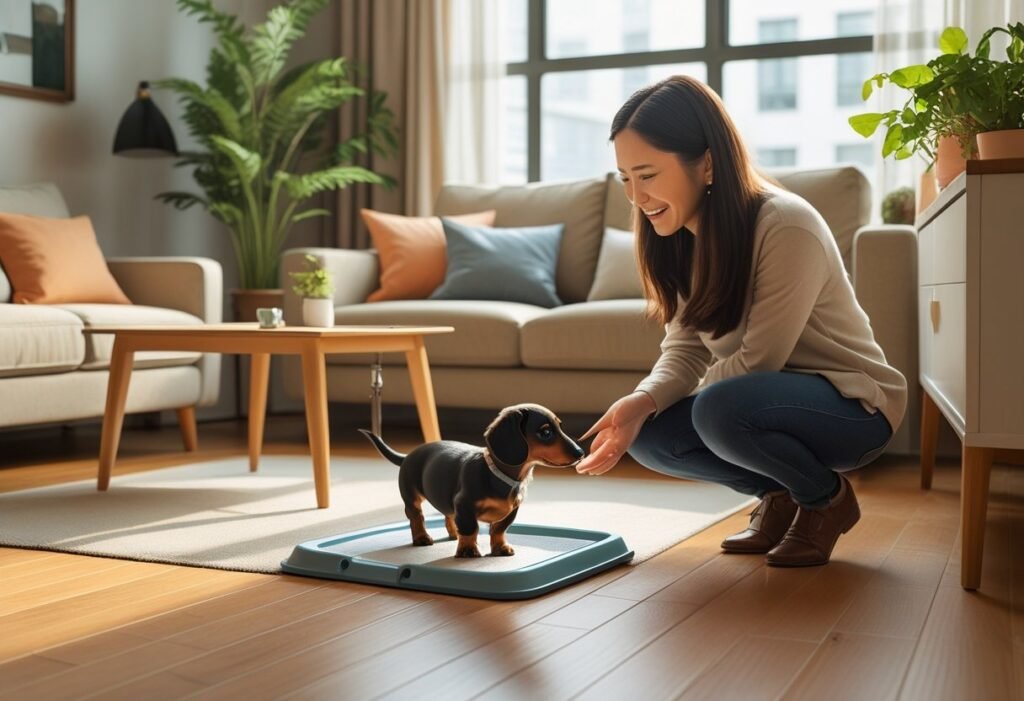
Potty training in an apartment really comes down to routine and picking the right spot 🐾. Using proven indoor training methods and handling accidents calmly will save you a lot of stress 😌.
Techniques for Effective Indoor Training 🏠
Crate training works well for dachshunds in apartments 🐶. Pick a crate that’s just big enough for them to stand and turn around—dogs usually won’t mess where they sleep 🛏️.
When you can’t watch your dachshund, put them in the crate ⏳. For puppies under six months, take them out every two to three hours ⏰.
Paper training gives you some flexibility 📰. Cover a little area with newspapers or pads, and then shrink the area as your dog gets the hang of it ✂️.
Bell training is handy 🔔. Hang a bell by the door at nose level and ring it every time you take them out. Eventually, your dachshund will start ringing the bell to let you know they need to go 🚪.
Positive reinforcement really speeds things up 🌟. Give treats and lots of praise right after your dog goes in the correct spot 🍪.
Don’t punish accidents ❌. That just slows things down and makes your dog nervous 😟.

🍲 ChefPaw Dog Food Maker
- Create fresh, healthy meals right in your kitchen
- Perfect for picky or sensitive Dachshunds
- Control every ingredient for a balanced diet

🌱 Wild Earth Complete Protein Dog Food
- Plant-based formula with clean ingredients
- Gentle on sensitive stomachs and allergies
- Supports healthy weight in small spaces

Establishing a Potty Routine ⏱️
Take your dachshund outside first thing in the morning 🌅. That’s the best way to avoid early accidents 🚫.
Plan potty breaks every two to three hours during the day 🐾. Puppies will need even more trips outside than adults 🐕.
Meal timing matters 🍽️. Feed your dachshund at set times each day ⏰.
Most dogs need to go out 15-30 minutes after eating ⌛. Adjust your schedule to match their needs 🗓️.
Take them out right before bedtime to cut down on overnight messes 🌙.
Watch for signs like sniffing, circling, whining, or scratching at the door 👀. Those usually mean it’s time for a break 🐾.
- Sniffing the ground 🐾
- Circling 🔄
- Whining 😢
- Scratching at the door 🚪
Stick with the routine on weekends, even if you’re home all day 🏡. Consistency is everything 💪.
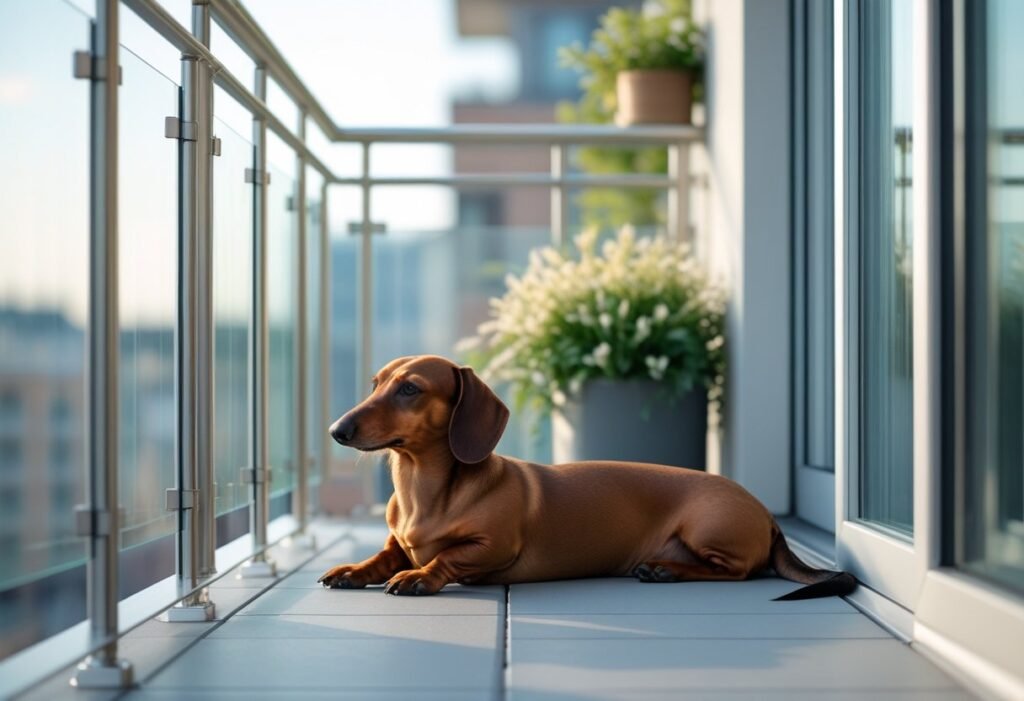
Choosing Potty Locations 🌳
Balcony potty areas can work for some people 🌿. Use artificial grass or pads on a waterproof mat, and clean it daily to keep odors down 🧼. Double-check your lease before setting this up 📜.
Designated outdoor spots help your dachshund learn faster 🚶♂️. Take them to the same area near your building every time. The familiar smells help them go quickly 🐶.
Indoor backup locations are useful when it’s pouring rain or freezing out ❄️. Set up pads in a bathroom or laundry room, away from food and water bowls 🚿.
Elevator rides can be tricky with puppies 🐾. If you think they’ll have an accident, just carry them 🐕.
Managing Accidents 🧹
Clean up accidents right away with an enzyme cleaner 🧴. Regular cleaners don’t get rid of odors your dog can still smell 👃.
If you leave any scent behind, your dachshund might keep going in the same spot 🔄.
Don’t punish accidents you didn’t see happen ❌. Dogs don’t connect the scolding to what they did earlier ⏳.
If you catch them in the act, interrupt gently and guide them to the right spot 🐾.
If accidents keep happening, supervise more closely and add extra potty breaks 🐕.
Protect your carpet with washable rugs in likely accident zones 🪑. It’ll save your security deposit and some headaches 💰.
If your dachshund suddenly starts having accidents after being house-trained, check with your vet 🩺. Sometimes medical issues are to blame 🐾.
Keep track of accident patterns 📝. Sometimes you’ll spot a trigger or timing issue you can fix pretty easily 🔍.
Setting Up Your Apartment for a Dachshund
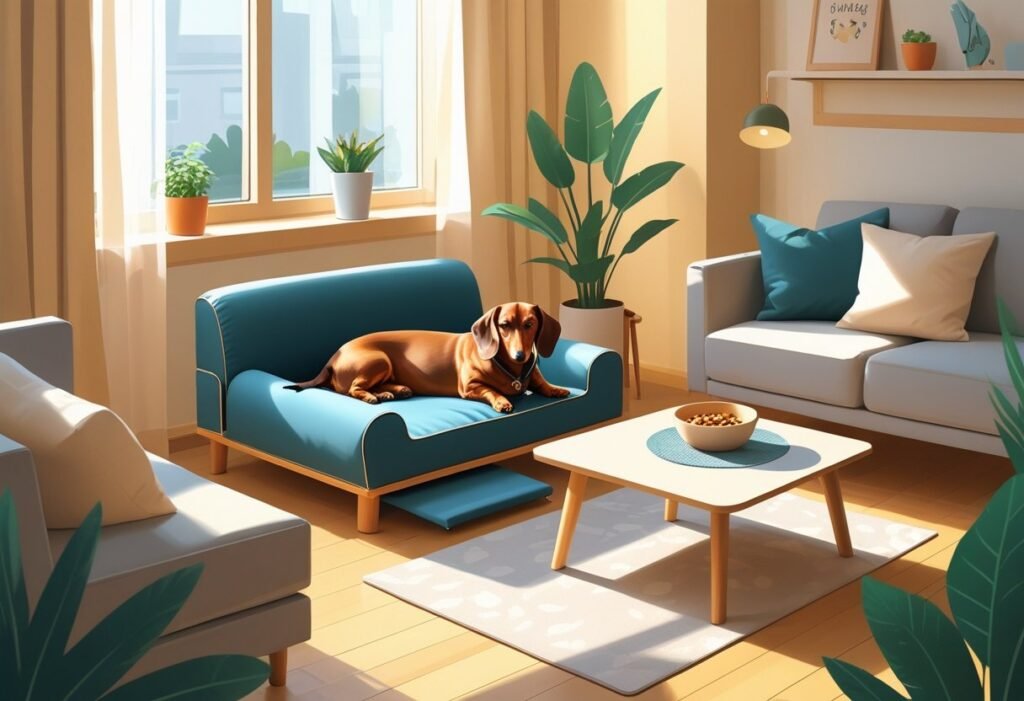
Your apartment probably needs a few tweaks to make it dachshund-friendly 🐾. Focus on barriers for back protection, organizing supplies in tight spaces, and clearing out hazards at their low eye level 👀.
Space-Saving Pet Supplies 🗄️
Try storing your dachshund’s things in stackable bins under the bed or tucked into closets 🛏️. Wall-mounted hooks by the door work well for leashes and collars 🐕.
Collapsible food and water bowls save space 🍽️. Just fold them flat and stash them in a kitchen drawer when you’re done 🗂️.
Essential compact supplies:
- Foldable crate for small apartments 🐾
- Stackable food storage containers 🥫
- Wall-mounted toy organizer 🧸
- Under-bed storage boxes for extra supplies 📦
Furniture that doubles as storage is a lifesaver 🙌. Ottoman benches are perfect for hiding toys and treats, and coffee tables with shelves can hold grooming gear ✂️.
Mount a small shelf near the door for keys, treats, and waste bags 🗝️. It’s a little thing, but it keeps everything handy for walks 🚶♂️.

🍽️ Petlibro Automatic Feeder
- Scheduled feedings keep routines consistent
- Portion control to prevent overeating
- Ideal for long workdays or busy owners
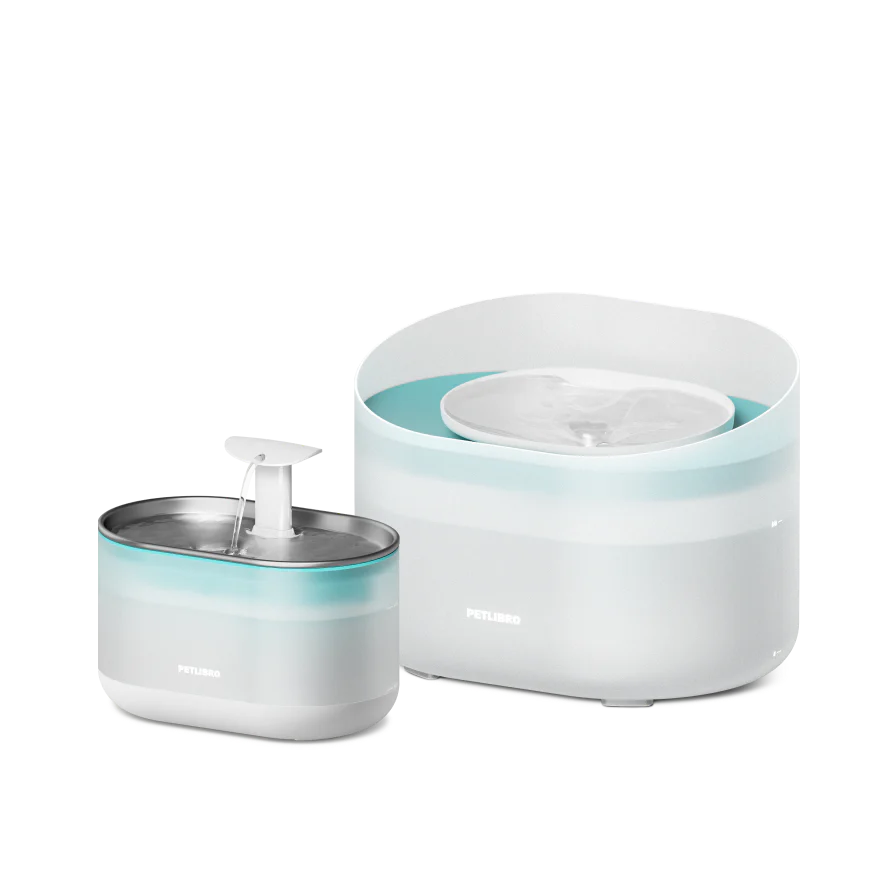
💧 Petlibro Water Fountain
- Fresh, flowing water encourages drinking
- Compact design fits perfectly in apartments
- Filters remove dirt and hair for clean hydration
Safe Zones and Sleeping Areas 😴
Set up a quiet sleeping spot away from busy areas 🏡. Dachshunds need beds that support their long backs, so look for orthopedic beds or memory foam options 🦴.
Placing the bed in a corner or up against a wall gives your dog a sense of security 🤗. It also helps block out noise from neighbors 🔇.
Ideal sleeping spots:
- Bedroom corner away from the door 🛏️
- Living room area with low foot traffic 🛋️
- Spare room or office space 🖥️
Use baby gates to block stairs 🚫. Dachshunds can really hurt their backs if they jump or fall down steps ⚠️.
Create a safe zone where your dog can retreat when things get overwhelming 🐶. A crate or a small area with their bed, water, and a favorite toy works well 🧸.
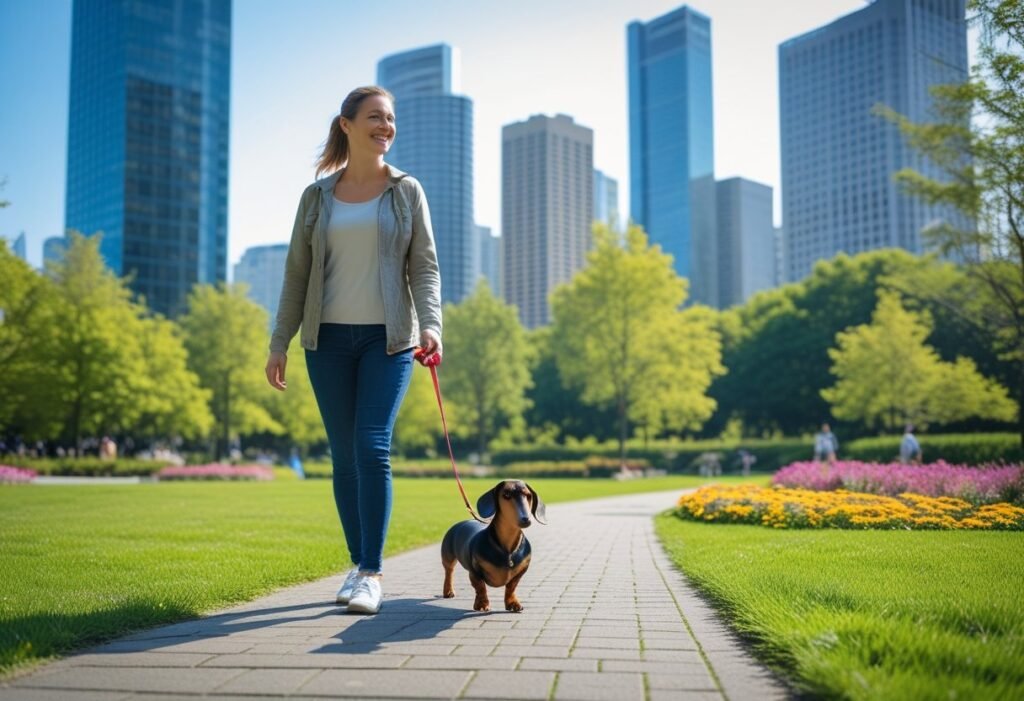
🎉 Grab your free Dachshund care checklist!
Dog-Proofing Your Space 🔒
Secure all loose electrical cords and charging cables 🔌. Dachshunds are so close to the ground, and they might chew on dangling wires if you’re not careful ⚡.
Move small stuff—coins, jewelry, hair ties—up onto higher shelves 📚. These things can cause choking or other health issues 😟.
Common apartment hazards to remove:
- Cleaning supplies under sinks 🧴
- Medications in low cabinets 💊
- Small decorative items on coffee tables 🖼️
- Loose carpet edges or rugs 🪞
Child locks on cabinets with food, chemicals, or breakables are a must 🔐. Dachshunds can surprise you by opening regular cabinet doors 😲.
Check balcony railings for gaps 🌿. You’d be amazed how small a space a dachshund can squeeze through 🐾.
Either remove toxic houseplants or put them out of reach 🌱. Popular ones like pothos and snake plants can make dogs sick 🤢.
Socialization and Reducing Barking
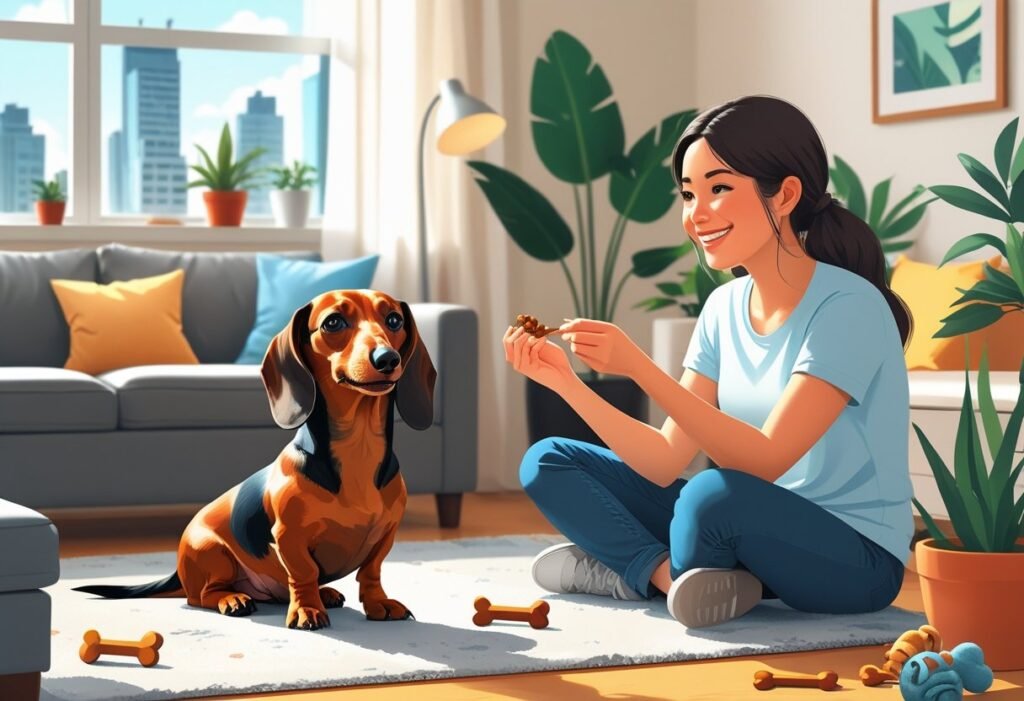
Socializing your dachshund helps them get used to apartment noises and neighbors 🐾. Training can curb excessive barking and keep things peaceful 🌿.
Helping a Dachshund Adjust to Neighbors 🤝
Start by introducing your dachshund to neighbors in short, controlled meetings 🐶. Keep it brief and positive ✨.
Hand out treats when your dog sees neighbors in the hallway or common areas 🍪. That way, they’ll make positive associations with new people 🐕.
Practice walking past neighbors’ doors without stopping 🚪. When your dachshund stays calm, reward them with treats and praise 🌟.
Key neighbor introduction steps:
- Meet one neighbor at a time 🐾
- Keep meetings under 5 minutes ⏱️
- Let your dachshund approach at their own pace 🐕
- Ask neighbors to ignore your dog at first 🙈
Ease your dachshund into apartment sounds 🔊. Play recordings of footsteps, doors closing, and elevators at low volume 🎵.
Turn up the volume slowly over a few weeks 📈. Give treats when your dog stays calm during these sessions 🍪.

📹 Petcube Cam 360
- 360° room view to keep an eye on your pup
- Two-way audio for real-time reassurance
- Helps prevent barking and separation anxiety
📍 Tractive DOG GPS Tracker
- Track your Dachshund’s location in real time
- Set safe zones with instant alerts
- Waterproof and durable for adventures

Minimizing Noise Complaints 🔇
Teach your dachshund to use an indoor potty area 🚽. That way, you won’t need as many hallway trips, which means fewer chances for barking at neighbors 🐾.
Effective barking reduction methods:
- Ignore attention-seeking barks – Don’t respond to demands 🙉
- Redirect to toys – Hand over a puzzle toy when barking starts 🧸
- Use quiet commands – Teach “quiet” with treats and praise 🍪
- Block visual triggers – Close curtains to cut down on window barking 🪟
Give your dachshund some exercise before you leave 🐕. A tired dog is way less likely to bark out of boredom or pent-up energy ⚡.
Set up a quiet space away from doors and windows 🏠. Use it when your dog seems overstimulated 🐾.
White noise machines can help muffle outside sounds 🎶. They’re great for blocking out footsteps or voices from neighboring apartments 🔊.
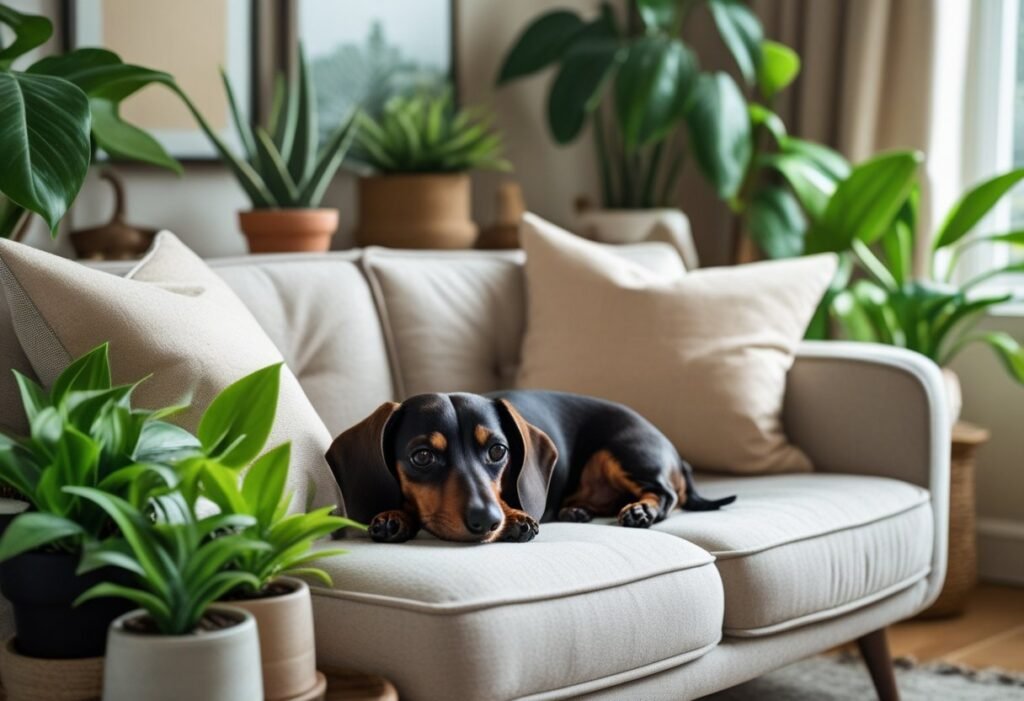
Promoting Calm Behavior 😌
Stick to a consistent daily routine ⏰. Dachshunds feel safer when they know what’s coming next 🐶.
Daily routine elements:
- Same feeding times 🍽️
- Regular walk schedule 🚶♂️
- Set bedtime 🌙
- Consistent quiet time 💤
Teach your dachshund to settle on command 🐾. Practice having them lie down and stay calm for longer periods, starting with 30 seconds and working up to 10 minutes ⏳.
Reward calm behavior with treats and gentle praise 🌟. It’s simple but effective 💛.
Try calming aids if your dog seems anxious 🐕. Some people use anxiety wraps, pheromone diffusers, or calming supplements 🌿.
Don’t punish barking ❌. Yelling just makes things worse and ramps up anxiety 😟.
Instead, redirect your dog’s attention 🧠. Chew toys, puzzle feeders, or a quick training session can provide the mental stimulation they crave 🐾.
Health and Wellness Considerations
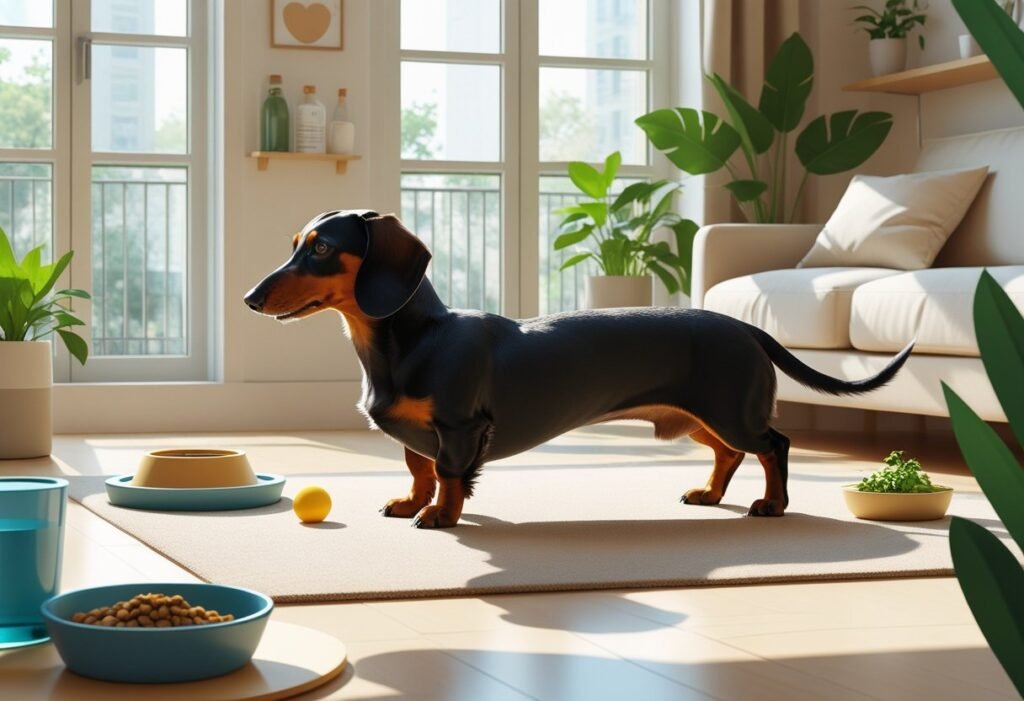
Dachshunds have unique health needs in apartments 🐾. Their long backs and tendency to gain weight mean you have to stay on top of things to prevent serious issues ⚠️.
Preventing Obesity in Small Spaces ⚖️
Even in a small apartment, your dachshund needs regular exercise 🚶♂️. Aim for 30 minutes a day, split into two walks 🐕.
If the weather’s bad, indoor activities help 🌧️. Puzzle toys keep them busy, and hiding kibble around the apartment adds mental stimulation 🧩.
Daily Exercise Requirements:
- Morning walk: 15 minutes 🌅
- Evening walk: 15 minutes 🌆
- Indoor play: 10-15 minutes 🧸
- Mental enrichment: 5-10 minutes 🐾
Watch food portions closely 🍽️. Apartment dogs often eat out of boredom, so measure each meal with a proper cup 🥄.
Skip the table scraps and don’t overdo the treats ❌. Keep treats to 10% of daily calories, and try low-calorie options like carrots or green beans 🥕.

🛏️ Majestic Pet Orthopedic Bed
- Provides essential back support for long-bodied Dachshunds
- Plush comfort for cozy naps and restful sleep
- Perfect fit for small apartment spaces
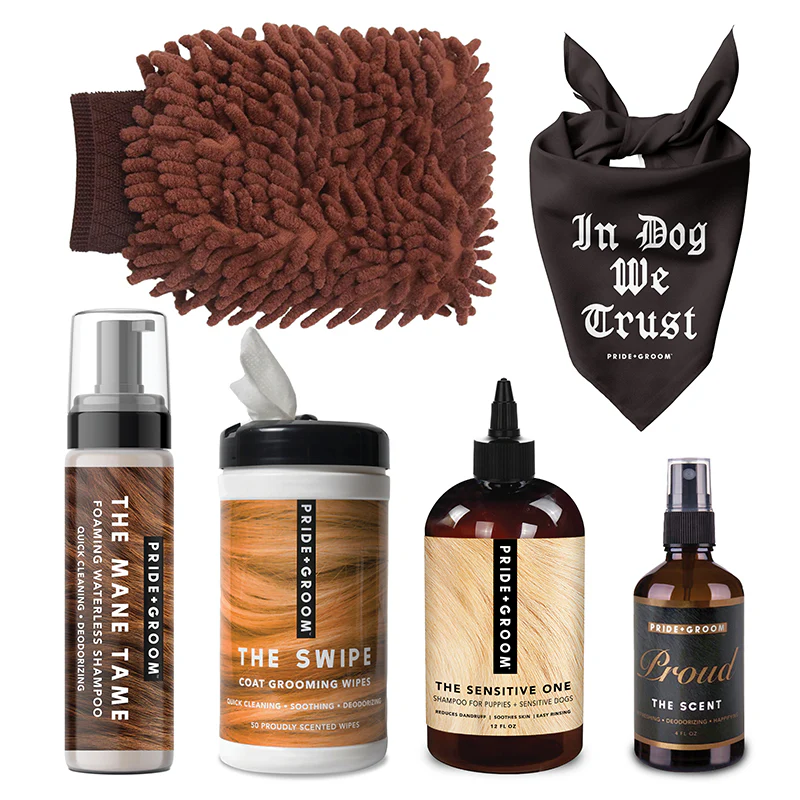
✂️ Pride + Groom Grooming Tools Kit
- Essential tools for safe, easy grooming at home
- Helps control shedding and keep your apartment clean
- Designed with comfort and safety in mind
Addressing Back Problems 🦴
Jumping on and off furniture is rough on dachshunds’ backs 😟. Set up ramps or stairs to the couch and bed 🛋️.
Keep your dog at a healthy weight to ease pressure on their spine ⚖️. Extra pounds make back injuries more likely, so check with your vet for ideal weight ranges 🩺.
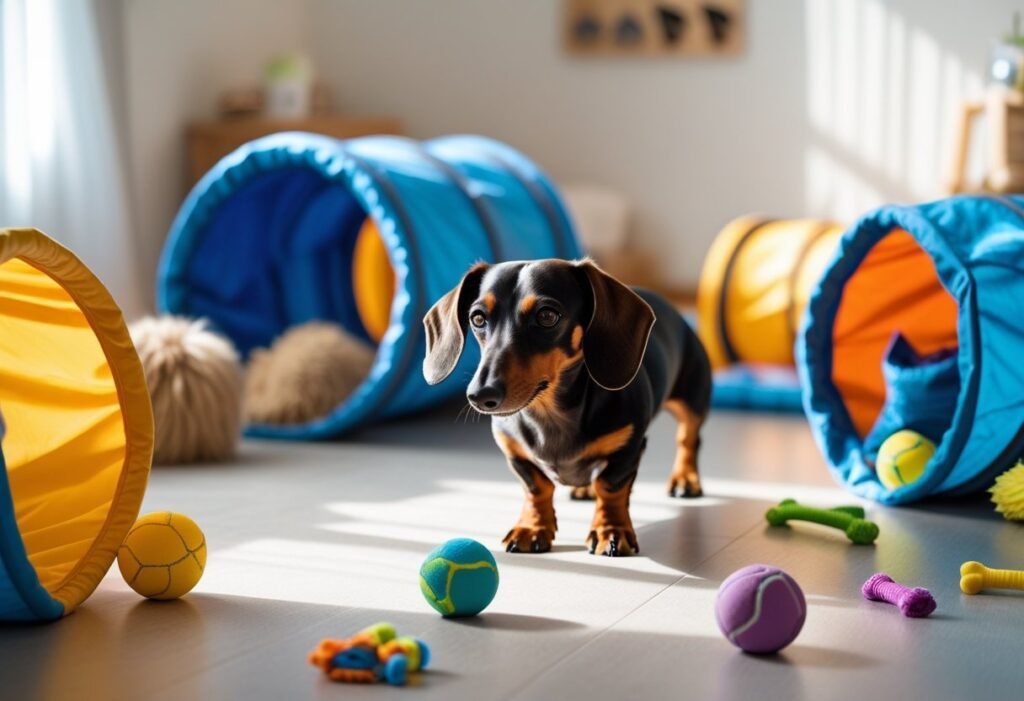
Apartment Safety Tips:
- Block access to high furniture 🚫
- Use non-slip rugs on smooth floors 🏠
- Carry your dog up stairs when you can 🐕
- Avoid rough play that involves twisting 🔄
Watch for signs of back pain 👀. If your dog walks stiffly, refuses stairs, or cries when picked up, something might be wrong 🚨.
Scheduling Veterinary Visits 🐾
Book vet checkups every six months for adult dachshunds 🗓️. Seniors should go every three to four months 👵.
Keep vaccination records up to date 📋, especially if your building asks for pet paperwork 🏢. Most apartments want proof of rabies and core vaccines 💉.
Weigh your dachshund every month, either at home or at a pet store with a scale ⚖️. It’s an easy way to catch changes early ⏱️.
Find a nearby vet clinic and know their emergency hours 🐾. Keep their contact info where you can grab it quickly 📞.
Set aside money for surprise health costs 💰. Dachshunds often need back surgery or weight management help, so pet insurance might be worth considering 🐕.
Managing Separation Anxiety in Apartment Environments
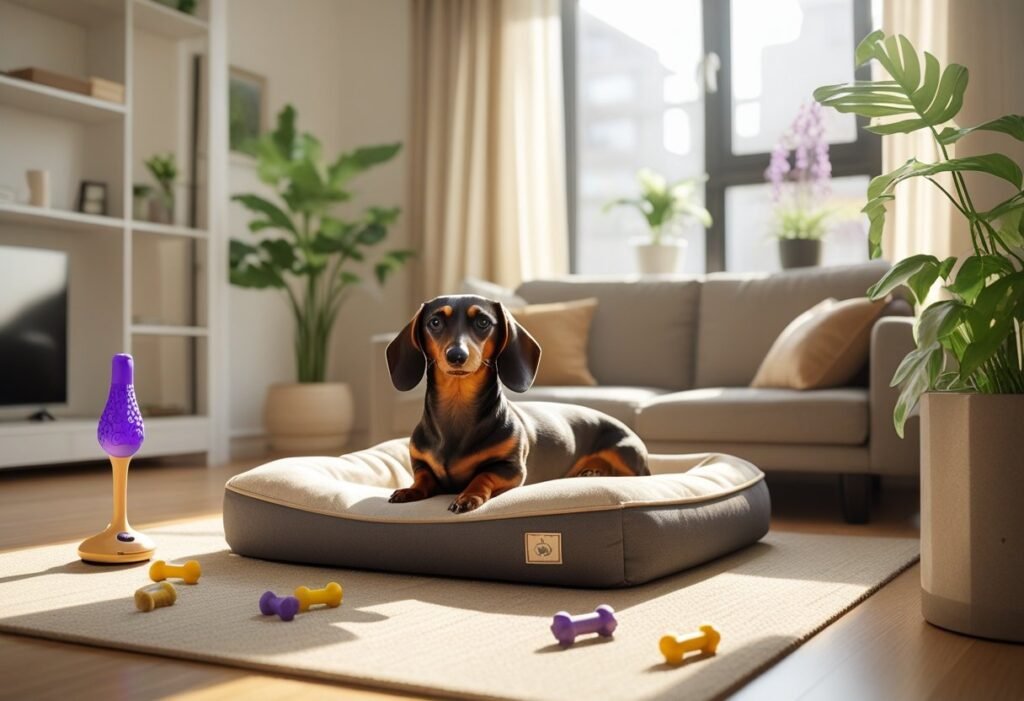
Dachshunds can get separation anxiety in apartments, leading to destructive behavior and stress 😟. If you recognize the signs early and use some comfort strategies, your dog will feel more secure even in a small space 🐾.
Signs of Separation Anxiety ⚠️
Your dachshund might show obvious distress when you leave 😢. Destructive chewing is common—think door frames, furniture legs, or even your shoes 🥿.
Excessive barking or howling often kicks in within minutes of your departure 🔊. That’s a quick way to get on your neighbors’ bad side 🚪.
Watch for scratching at doors or windows where you exited 🐾. Some dogs also dig at carpets near the door 🪑.
Accidents in the house can happen, even if your dog’s housetrained 🚽. Stress messes with their bladder and stomach 💧.
Pacing or restlessness before you leave might mean your dog’s picked up on your routine ⏳. They may shadow you or get anxious when you grab your keys 🔑.

🧬 AnimalBiome Gut Health Test Kit
- Check your Dachshund’s digestive health at home
- Helps prevent stomach issues common in apartments
- Simple process with clear, actionable results

🌿 Innovet PurCBD Oil
- Natural support for anxiety and stress relief
- Perfect for apartment dogs sensitive to noise
- Helps promote calmness during busy days
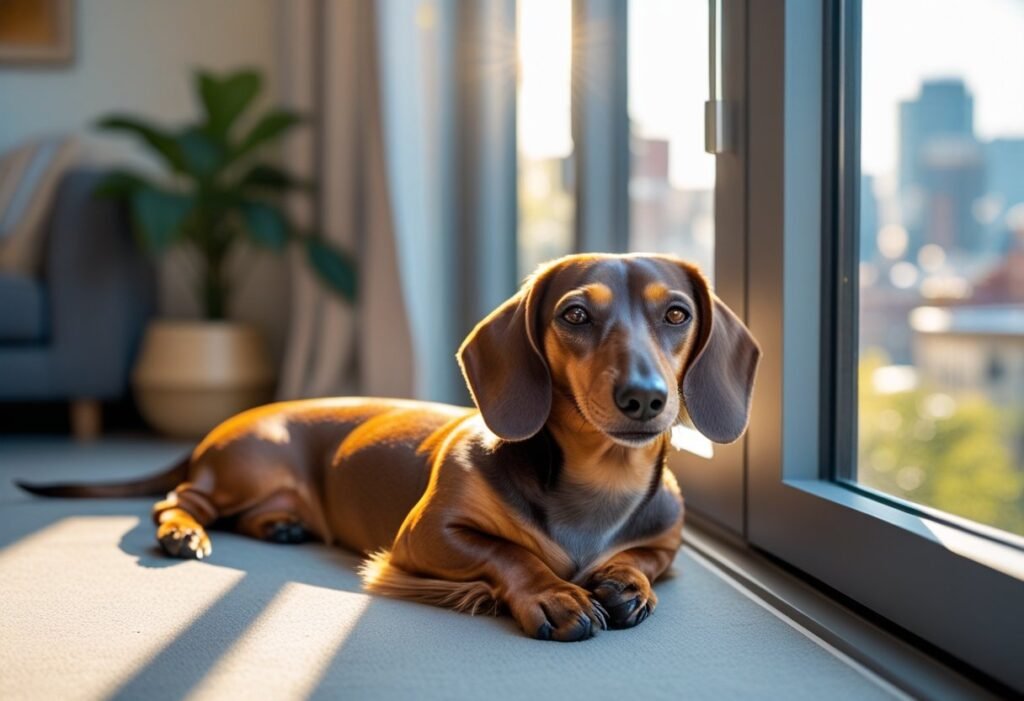
Strategies for Comfort and Security 🛋️
Set up a safe space using a crate or a cozy corner 🐕. Put in blankets and toys with your scent 🧸.
Practice short departures—start with 5-10 minutes and slowly increase as your dog gets used to it ⏱️.
Leave puzzle toys or treat-dispensing toys to keep your dachshund busy 🧩. Kong toys stuffed with peanut butter are a classic 🥜.
Avoid dramatic goodbyes; just slip out quietly 🚶♂️. Big fusses make anxiety worse ❌.
Consider calming aids like:
- Thundershirts or anxiety wraps 🐾
- Calming music or white noise 🎵
- Pheromone diffusers 🌿
Exercise your dog before you go 🐕. A tired dachshund is more likely to nap while you’re out 😴.
Mix up your routine so your dog can’t predict when you’re leaving 🔄. Pick up your keys at random times to break the pattern 🗝️.
Integrating Your Dachshund into Apartment Community Life

Check your lease and know the building rules before bringing your dachshund home 🐾. It’s just easier for everyone if you’re respectful in shared areas 🏢.
That means fewer complaints and a happier vibe all around 😊.
Pet Policies and Lease Considerations 📜
Read your lease carefully—some apartments have weight limits, breed restrictions, or extra pet deposits 🐶.
Common lease requirements include:
- Pet deposit ($200-500) 💰
- Monthly pet rent ($25-75) 🏷️
- Vaccination records 💉
- Renter’s insurance with pet coverage 🏠
Many buildings limit how many pets you can have 🐾. Some want your dachshund spayed or neutered before you move in ✂️.
Always get written approval from your landlord 🖊️. Emailing requests gives you a paper trail if there are any issues later 📧.
Attach your dog’s photos, size, and a little note about their temperament 📷. It helps! 🐕
Keep your pet registration up to date 🗂️. Most apartments want annual vaccine updates, and missing deadlines can lead to fines or worse ⚠️.
🌟 Apartment Living Must-Haves for Happy, Healthy Dachshunds
- 🍖 Petcube 2 Bites — Stay connected while away by watching, talking, and even tossing treats to your Dachshund.
- 🛏️ Majestic Pet Pet-Stairs — Protect those delicate backs by giving your Dachshund safe, easy access to couches and beds.
- 🎽 Embark Pet Adventure Harness — Secure, comfortable fit for daily walks and small-space adventures.
- 🧬 AnimalBiome Gut Restore Supplement — Supports healthy digestion and reduces stress-related tummy troubles common in apartment dogs.
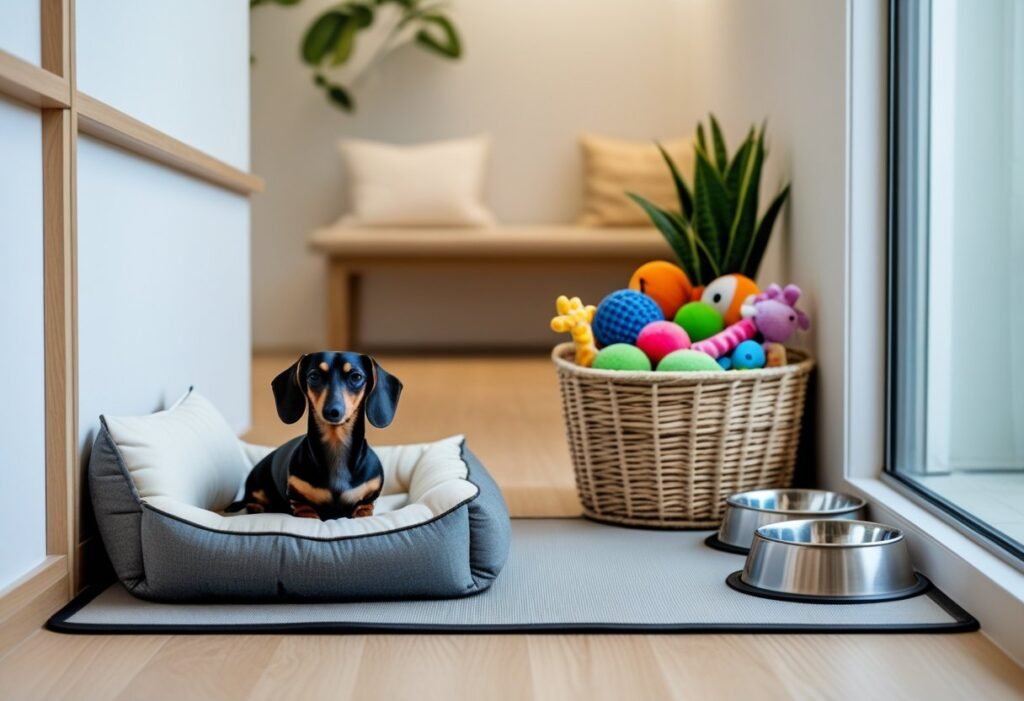
Using Shared Spaces Responsibly 🤝
Leash your dachshund in hallways, elevators, and common areas 🚶♂️. Even the friendliest pup can surprise neighbors or kids 👧👦.
Clean up accidents right away 🧼. Carry waste bags and a little cleaning spray, just in case 🛍️.
Report any damage to management as soon as you notice it 📝.
Elevator etiquette matters:
- Hold your dog close 🐾
- Exit first if someone seems uneasy 🚪
- Wipe muddy paws before stepping in 🧽
If you can, avoid peak hours in shared spaces ⏰. Early mornings or late evenings are usually quieter for walks 🌅🌙.
Keep noise down during quiet hours 🔇. Dachshunds tend to bark at sounds, so close your windows between 10 PM and 7 AM 🪟.
Use only the designated pet relief areas 🌳. Don’t let your dog use landscaping or non-pet areas for bathroom breaks—it’s just not worth the trouble 🚫.
Maintaining a Clean and Odor-Free Apartment
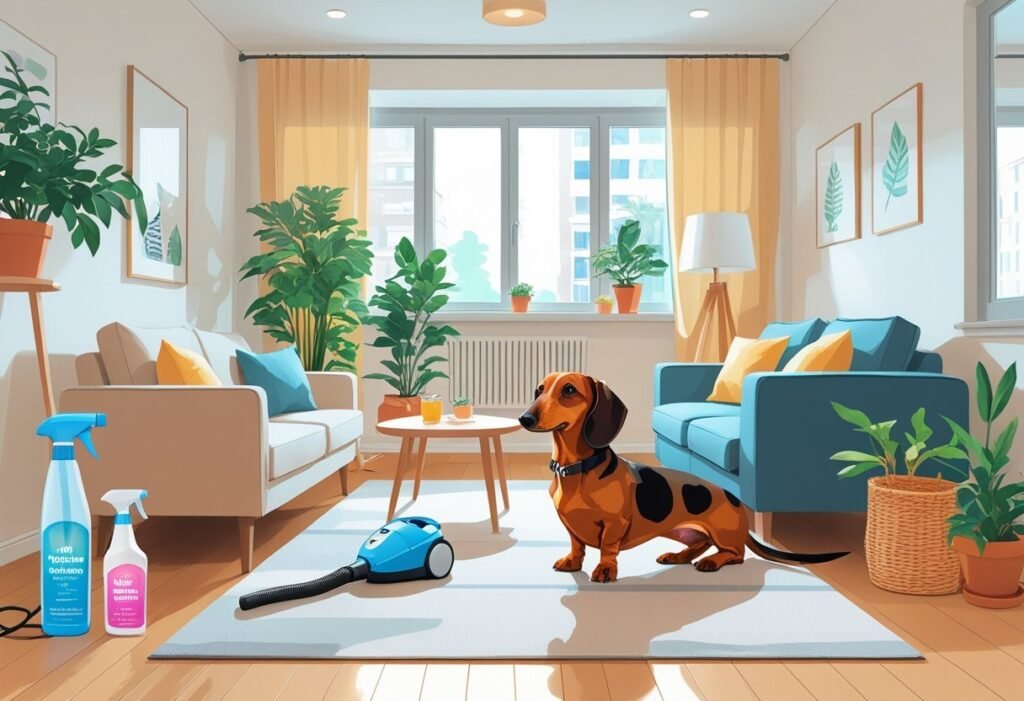
Regular cleaning and good grooming habits keep your apartment fresh, even with a dachshund around 🐾. Managing shedding and allergens makes it healthier for you and your pup 🌿.
Cleaning Routines for Pet Parents 🧹
Clean your floors daily to stop dirt and odors from building up 🧼. Sweep or vacuum the spots your dachshund walks most 🚶♂️.
Mop hard floors twice a week with pet-safe cleaners 🧴. Focus on areas near food bowls, water dishes, and your dog’s favorite nap zones 🍽️.
Weekly Deep Cleaning Tasks:
- Vacuum all carpets and rugs 🧽
- Wash your dachshund’s bedding and toys 🛏️
- Scrub food and water bowls with hot, soapy water 💧
- Wipe down walls and baseboards where your dog hangs out 🖐️
Clean up accidents and empty litter boxes right away 🚫. Use enzyme cleaners to break down odors for good 🧴.
Change your HVAC air filters monthly 🌬️. This pulls out pet dander and keeps the air fresh 🍃.
Wipe your dachshund’s paws after walks 🐾. Keep a towel by the door to catch mud or water before it gets tracked inside 🚪.
💛 Small-Space Essentials for Happy Apartment Dachshunds
- 🎽 Coastal Pet Harness – Secure, gentle control for hallway walks and apartment stairs
- 🌿 Zomalka Anxiety Relief Drops – Natural calm for noisy neighbors or new surroundings
- 🛁 King Klean Dog Shampoo – Keep your Doxie fresh and clean without drying their skin
- 🎨 Purr & Mutt Personalized Dachshund Art – A heartfelt piece to celebrate your apartment life together
- 👕 Dog is Good Dog T-shirt – Wear your Doxie love proudly on every walk
🐾 Create a cozy, stress-free space for you and your Dachshund to thrive together.
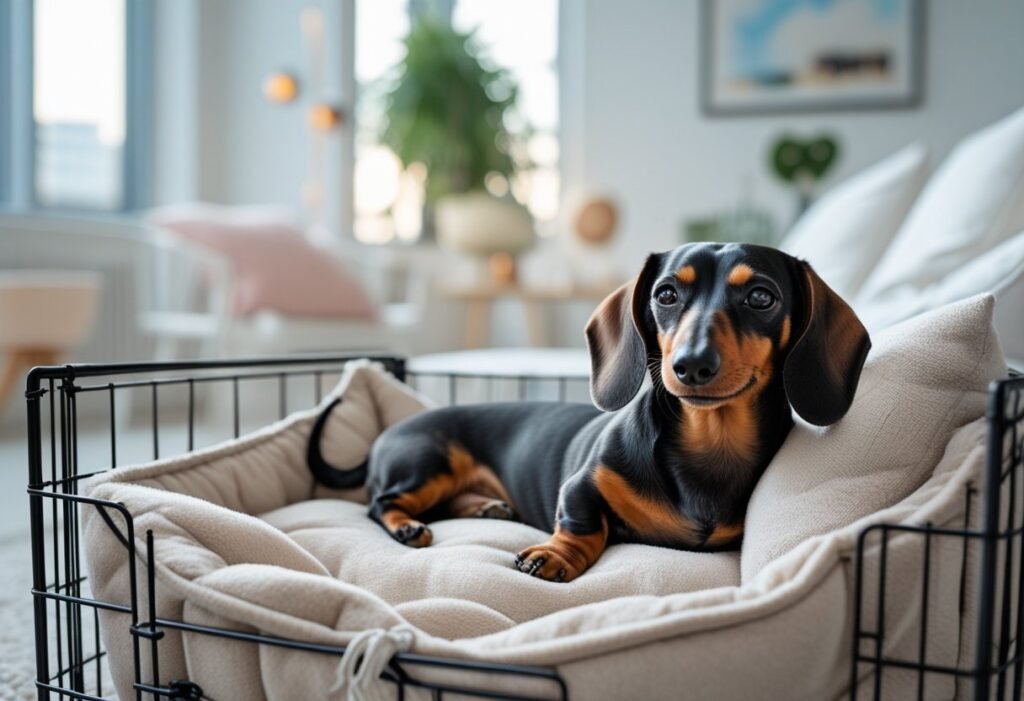
Dealing with Shedding and Allergens 🐕
Brush your dachshund three times a week to reduce loose fur 🪮. Short-haired dachshunds need less brushing than long-haired ones ✂️.
Use a pet vacuum for animal hair 🧹. Regular vacuums usually miss the fine fur that gets into carpets 🏠.
Effective Shedding Control Methods:
- Lint rollers for furniture and clothes 👕
- Damp rubber gloves to pick up hair from upholstery 🧤
- Microfiber cloths to trap pet dander on surfaces 🪞
Bathe your dachshund once a month or when they’re dirty 🚿. Too many baths can dry out their skin and make shedding worse ❌.
Put HEPA air purifiers in the rooms your dog uses most 🌫️. These catch tiny allergens that cleaning can miss 🌟.
Wash couch covers and throw blankets weekly in hot water 🛋️. That helps keep dander from building up on your furniture 🧺.
🐾 Don’t Miss Out!
Download our free Dachshund care guide to keep your furry friend happy and healthy.
Get Your Free Guide 🐶Frequently Asked Questions
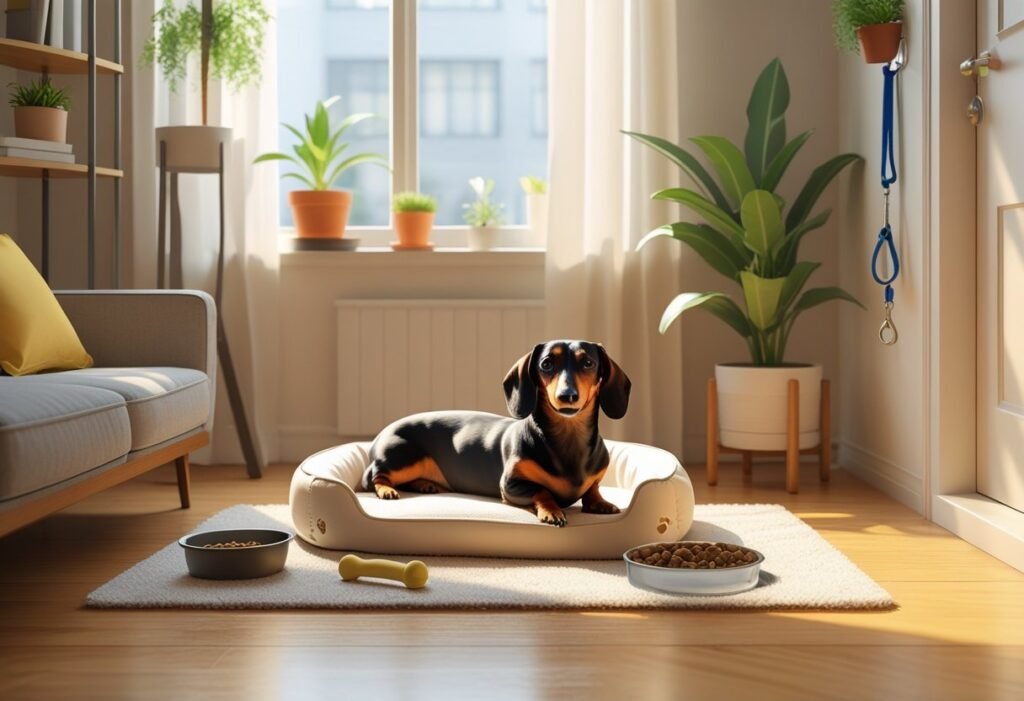
Dachshunds need daily walks and indoor play to stay healthy in apartments 🐾. Training takes patience because of their stubborn streak 😅.
Potty training goes best with consistent schedules and crate training 🗓️.
How much exercise does a dachshund require in an apartment setting? 🐕
Your dachshund needs 30 to 60 minutes of exercise each day ⏱️. Two walks of 15-20 minutes usually cover it 🚶♂️.
Indoor play counts too 🎾. Short games of fetch or tug-of-war fit well in small spaces 🧸.
Dachshunds have moderate energy, so they don’t need intense workouts ⚡. But regular movement keeps them from gaining weight ⚖️.
What are the challenges of raising a dachshund in a small living space? 🏢
Dachshunds tend to bark at neighbor noises 🔊, which can be a problem with thin apartment walls 🚪.
Their long backs make them prone to injury from jumping off furniture 🛋️. You’ll want to limit access to high spots like couches and beds 🚫.
Potty training is tougher without a yard 🏡. You’ll need to plan for frequent trips outside or try indoor potty options 🚽.
Can dachshunds adapt to living in apartments without a backyard? 🌳
They actually can do just fine without a yard 🐾. Dachshunds were bred to hunt in tunnels, so small spaces don’t bother them much 🐶.
Daily walks and outdoor time replace yard access 🚶♀️. Parks and dog-friendly spots can fill the gap 🌼.
Without a yard, indoor exercise and mental games matter even more 🧩. Puzzle toys and training sessions help keep them sharp and happy ✨.
What should be considered when training a dachshund in an apartment environment? 🎓
Dachshunds are independent and sometimes stubborn 😏. You’ll need extra patience and to stick with your commands 💪.
Keep training sessions short—five to ten minutes is plenty ⏳. Longer and they might check out 😴.
Use treats and praise 🍪. Harsh methods just make them dig in their heels ❌.
If barking is an issue, start working on it early 🐕. Teach a “quiet” command and redirect their attention when they start up 🔇.
How do you effectively potty train a dachshund in an apartment? 🚽
Stick to a schedule and take your dachshund out every 2-3 hours 🐾. Go out first thing in the morning and last thing before bed 🌅🌙.
Crate training helps—a lot of dachshunds won’t soil their sleeping spot 🛏️.
For emergencies, try pee pads or grass patches near the door 🌿. That encourages them to prefer going outside 🐾.
Watch for sniffing, circling, or whining 👀. Those are your cues to get outside, pronto ⏰.
What are some tips for keeping a dachshund mentally and physically stimulated indoors? 🧠
Try rotating your dachshund’s toys every week 🔄. That way, they won’t get bored with the same old stuff 🧸.
Hide treats in different spots around your apartment 🍪. This taps into their natural hunting instincts and keeps them busy 🐾.
Bring out puzzle feeders or treat-dispensing toys at meal times 🥏. Eating becomes a little adventure, and it helps slow down those speedy eaters 🐶.
Work on basic commands or teach a new trick indoors 🎓. Even short training sessions give their brains a workout and, honestly, it’s kind of fun for both of you 😍.
Set up a makeshift obstacle course with pillows and boxes 🛋️. Just keep any jumps low—dachshund backs are delicate, and you don’t want to risk an injury ⚠️.

